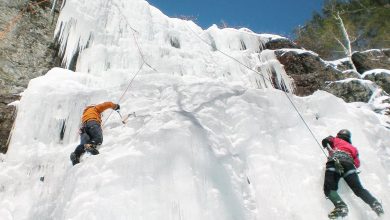Mountain Boots Vs Hiking Boots Comparison

When trying to find a new pair of boots for your next adventures, you may have across segments named ‘mountain’ or ‘mountaineering and ‘hiking’ boot. If you are a regular Joe who hasn’t been on any hardcore high-altitude trekking, this may come off as confusing.
Like, are they not practically the same? Indeed both of these footwear are designed for outdoor rough terrain adventures, so what really is the difference when it comes to Mountain Boots Vs Hiking Boots?
Well, to put it bluntly, the main difference between mountain boots vs hiking boots is the outsole design, mountain boots feature taller and stiffer build to protect the legs in high-altitude mountain adventures, whereas hiking boots are primarily designed for the walk on low-altitude adventures that doesn’t feature– ice and snow.
But the answer is never always that simple, is it? Several other factors also come into play when you are trying mountain boots vs hiking boots comparison, like their price range, specific use, tracks, and purpose, including the comfortability and safety factors.
So, let’s check out what really these adventurous boots be packing and what might suit your next fantastic exploration.
5 Best Mountaineering Boots and Trekking Boots
Mountain Boots Vs Hiking Boots – Summary
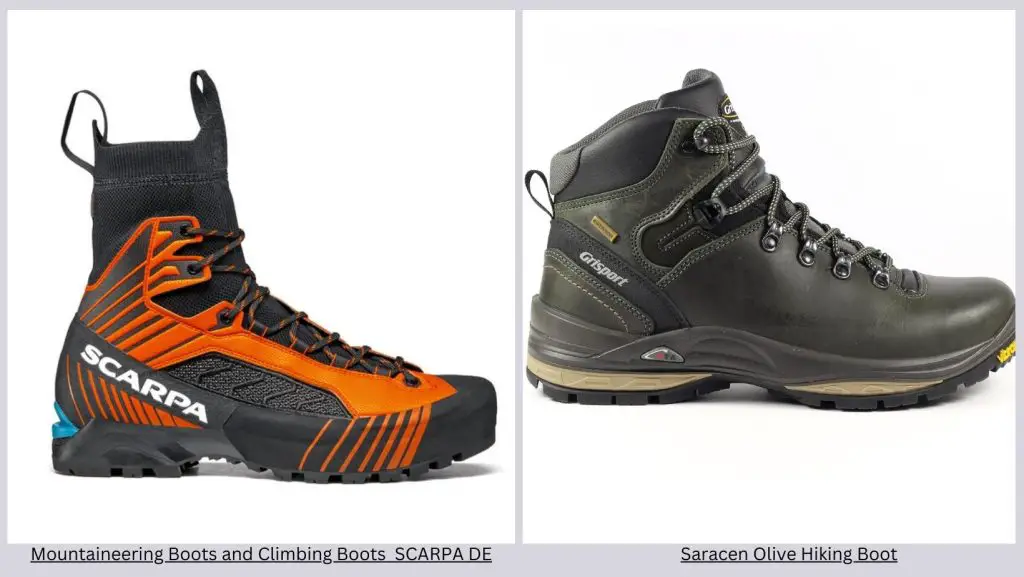
Well, without any further ado, let’s dive into the meaning of each of these boots. We are pretty sure you are already familiar with the basic meaning and functioning of these exploring footwear, but let’s try to be humble for the new folks.
So, to put it simply, ‘Mountain Boots’ are specially designed boots that can endure the mountain environment, ice, and snow. They are not only designed for protection on cold terrain but also to give proper gripping in such harsh environments. Mountain boots are primarily designed for adventures on mountains, snowfields, alpine rocks, and glaciers. They are often very stiff and contain metal or plastic shand for supportive footing on steep slippery terrains.
These mountain boots are designed often past the ankle length with rigid structure and insulation to keep the legs warm and dry, the crampon compatibility of these boots helps the mountaineer to attach suitable crampons for their adventure. Designed with high-quality durable materials like leather, plastic, and synthetics these are typically designed for high-altitude adventures.
On the other hand, ‘Hiking Boots’ are suitable for low-altitude adventures. These are specifically designed to last long on lower-altitude terrains like grass, mud, and rocks, and generally, on any expedition that doesn’t involve snow or ice. Hiking boots protect feet and ankles during hiking adventures on diverse landscapes at lower altitudes. They often come with several features like breathability, waterproofing, and customizable insulation to fit the need of the weather.
Unlike mountain boots, hiking boots have firm designs and come with flexible soles. Designed with lasting materials like synthetic fabrics, plastics, and mesh, these hiking boots provide good traction on different surfaces. Hiking boots are perfect for adventures like backpacking trips, hiking, camping, and generally any adventures with moderate weather conditions. Kow for their flexibility and lighter feel, hiking boots are good for both on-road and off-road adventures.
Weight Comparison
Mountain boots which are typically built for mountaineering on snowy slopes and walking over the ice segments of the high-altitude have bulkier built and always weigh more than hiking boots. Due to its added protection, its thick reliable outsole, and robust construction provide better grip and protect the alpine environment. Thus added protection features and durable high-density materials built for reliability on high-mountain adventures make this boot a heavier footwear in the adventure segment.
However, hiking boots that are designed for comfort, traction, and firm grip on different landscapes like grass, mud, and rocks are lighter than mountain boots. Its low-ankle cut design makes the boots feel even lighter and more comfortable due to its elasticity. Regardless, it is still the best option for hiking and extended use.
Insulation and Design
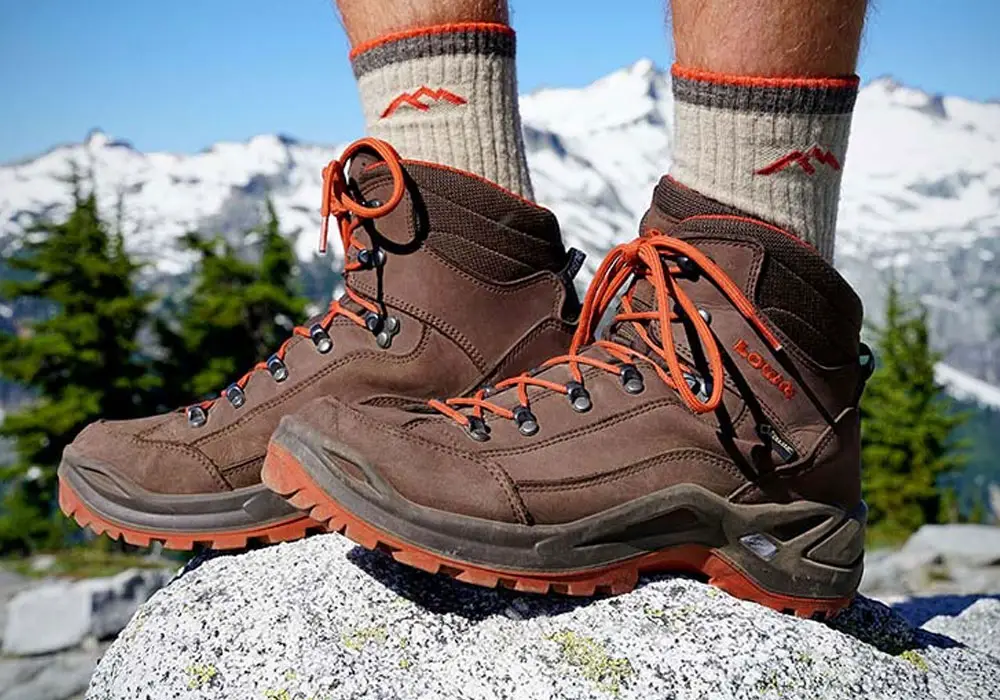
Naturally, mountain boots are designed to protect and keep feet warm in the colder climate and are well insulated. These several layers of insulation are the best option for keeping the feet warm in the dry environment of the high mountains. Similarly, the outsole of the mountain boots is designed for easy maneuvering on the snow and has deep lugs for better traction on the slopes. Although the outsole of these boots is stiff they offer the best stability on ice and snow.
Hiking boots, however, are not always well insulated. As the hiking adventure takes mostly on the lower altitudes, the less insulated factor often comes as a pro for this footwear. Even if you hike through a muddy region, or in the rain, the low insulation feature often works out for the best. Plus, unlike mountain boots for cold region adventures, hiking boots with breathability and waterproof features makes your feet less sweaty and protects them from getting soaked in rain. There are several varieties of hiking boots you could choose from depending upon the nature of your adventure, there is one for every.
Mountain Boots Vs Hiking Boots- The Price Segment
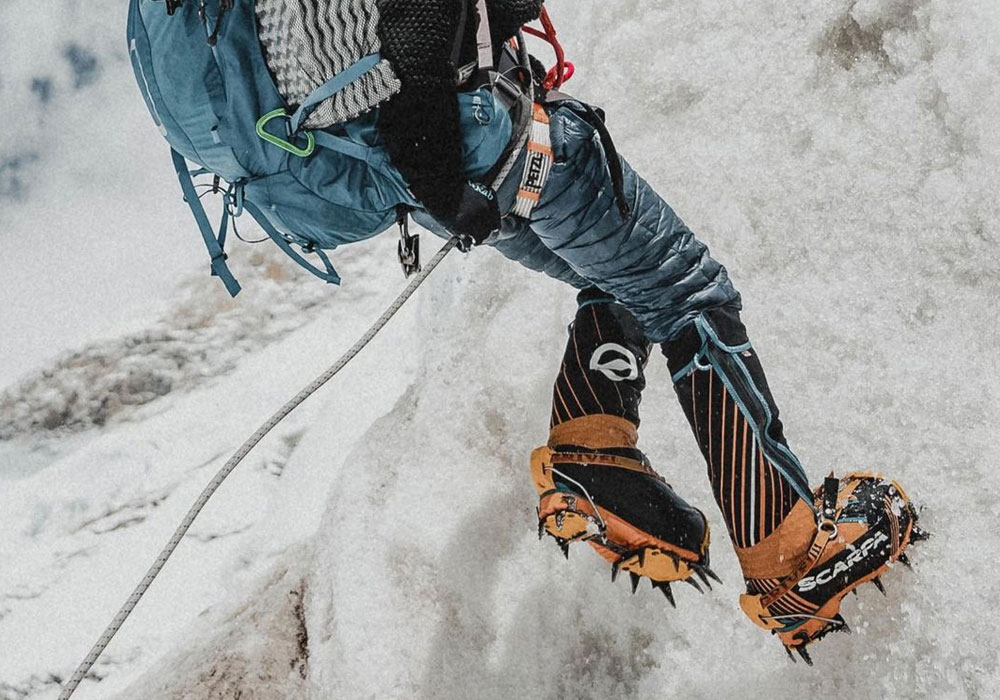
The mountain boots that are designed with more sturdy material and better insulation to protect the feet in the high-altitude colder region are obviously priced higher than the hiking boots. The price for an average mountain boot starts around $200 to $800, but, it is just an average price, the price may cross the average margin with the brand and material value.
Whereas, the price segment of the hiking boot hovers around $100 to $400. With different features like breathability, waterproofing, weatherproofing, and more the price may vary. But, in general terms, high-end hiking boots can be purchased at the cost of average mountaineering boots.
Mountain Boots Vs Hiking Boots: Pros & Cons
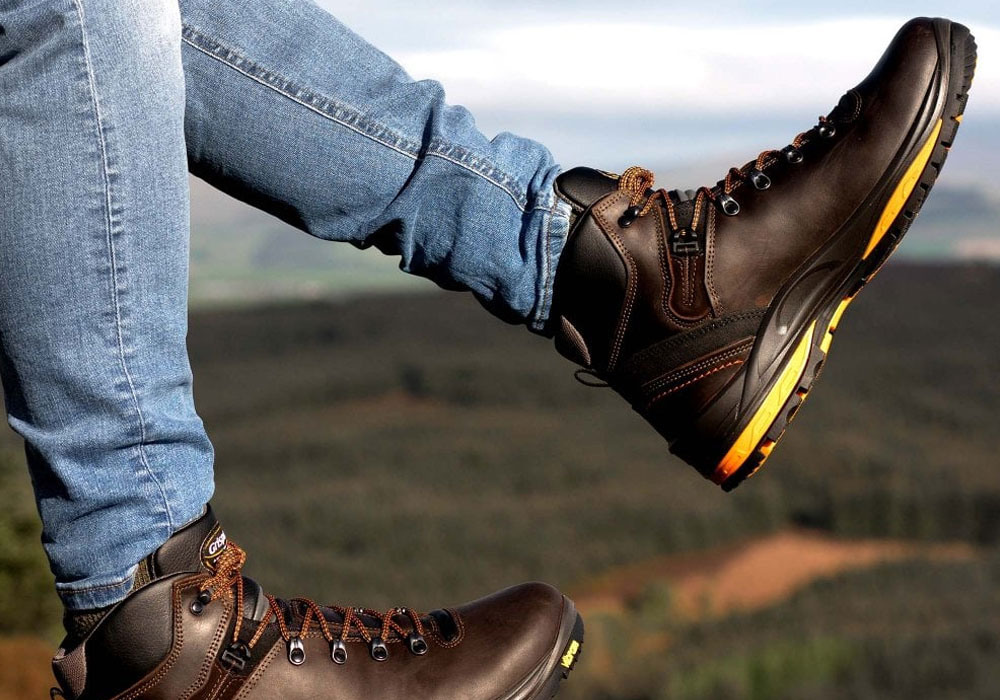
Before we end the comparison let’s check some of the pros and cons of both mountain boots and hiking boots.
Mountain Boots
Pros:
- High-density insulation
- Warm and cozy
- Utmost safety (lower impact)
- Best gripping and traction feature
- Ankle support
- Added stability
- Versatility
Cons:
- Expensive than hiking boots
- Not suited for rainy environments and watery terrains
- Stiff feeling
- Heavy and energy sapping
Hiking Boots
Pros:
- Affordable price range
- Light weight built
- Flexible for an uphill and downhill hike
- Waterproofing, air proofing, and weatherproofing features
- Lower ankle support
- Best for longer walks
- Toe box for injury protection
Cons:
- Less insulation
- Limited functions
- Missing crampon compatibility feature
- Nee to break in for leather options
You may also like:
The Conclusion
Obviously, the design and the functioning of both of these adventure footwear are far-apart from each other. So, what you may need right now might depend upon the adventure you are planning. If your exploration covers the icy and snowy segments of the high mountains the mountain boots are the right choice.
However, if your adventure is limited to low-altitude segments and doesn’t include the snow-glacier regions, hiking boots will be the best bet. These comfortable are perfect for both long and short walks, plus, you can select the features depending on the type of your adventure.



